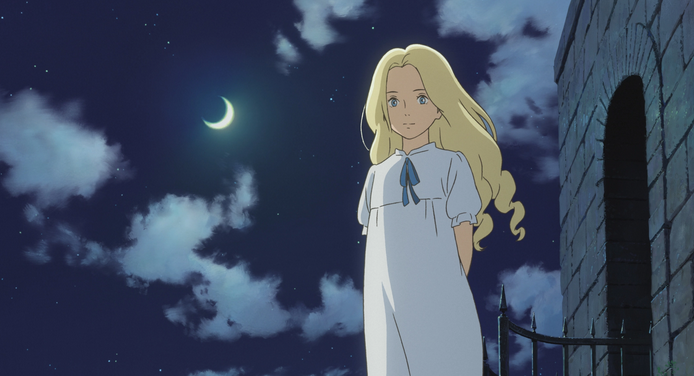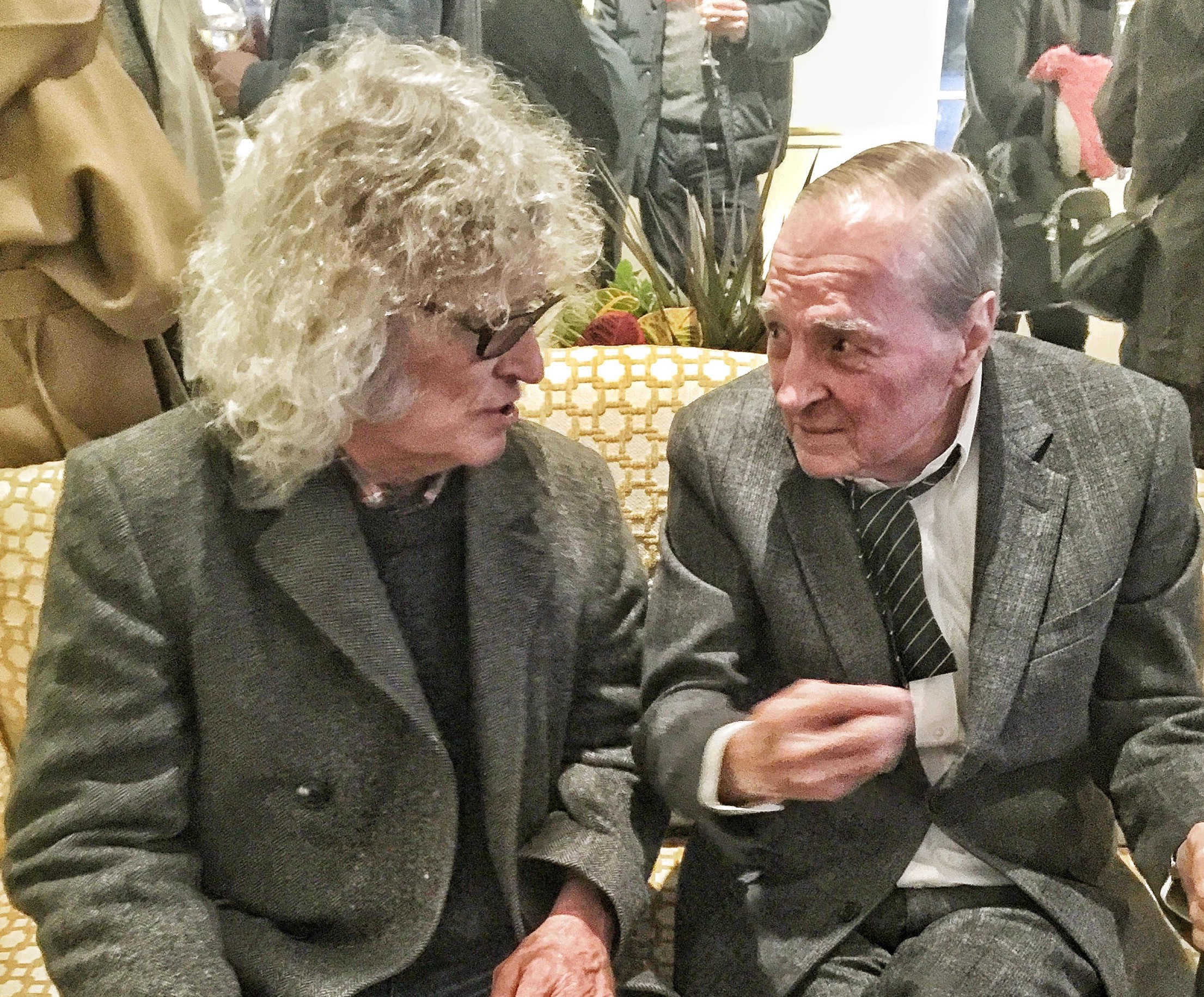
It was great hanging out with the great William Eggleston at a reception prior to his show, ‘William Eggleston and Jennifer Steinkamp: At Home at the Dixon,’ at Dixon Gallery and Gardens.
William Eggleston was the guest of honor at a reception, which was held January 25th, for his family, friends, and supporters at Dixon Gallery and Gardens. The reception was held prior to his show “William Eggleston and Jennifer Steinkamp: At Home at the Dixon.” The exhibit juxtaposes floral, garden, and still life imagery in late-19th and early-20th century paintings with Eggleston photos and Steinkamp computer animations.
Guests greeted the dapper Eggleston, 80, who sat on a sofa during the reception.
They knew Eggleston was coming to the reception, says Chantal Drake, Dixon director of development and communications. They were anticipating his visit, she says.
People enjoyed meeting him and “being in the room with him and his work.”
Dixon director Kevin Sharp says, “It was an honor to have William Eggleston attend the reception for our current exhibitions at the Dixon. And, speaking personally, it was very special to meet and have a little time with a figure of his importance in the history of art.”
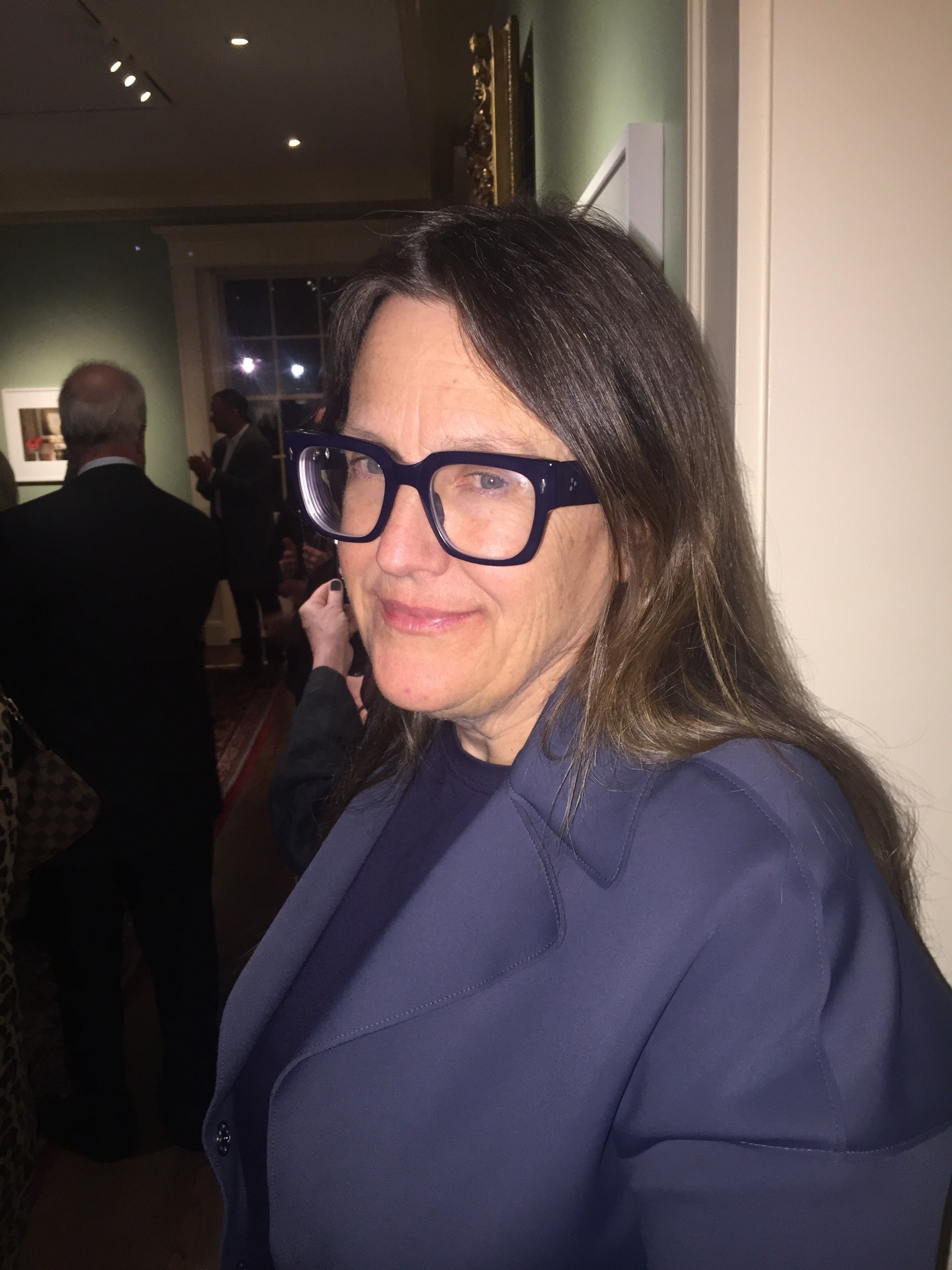 Michael Donahue
Michael Donahue
Jennifer Steinkamp
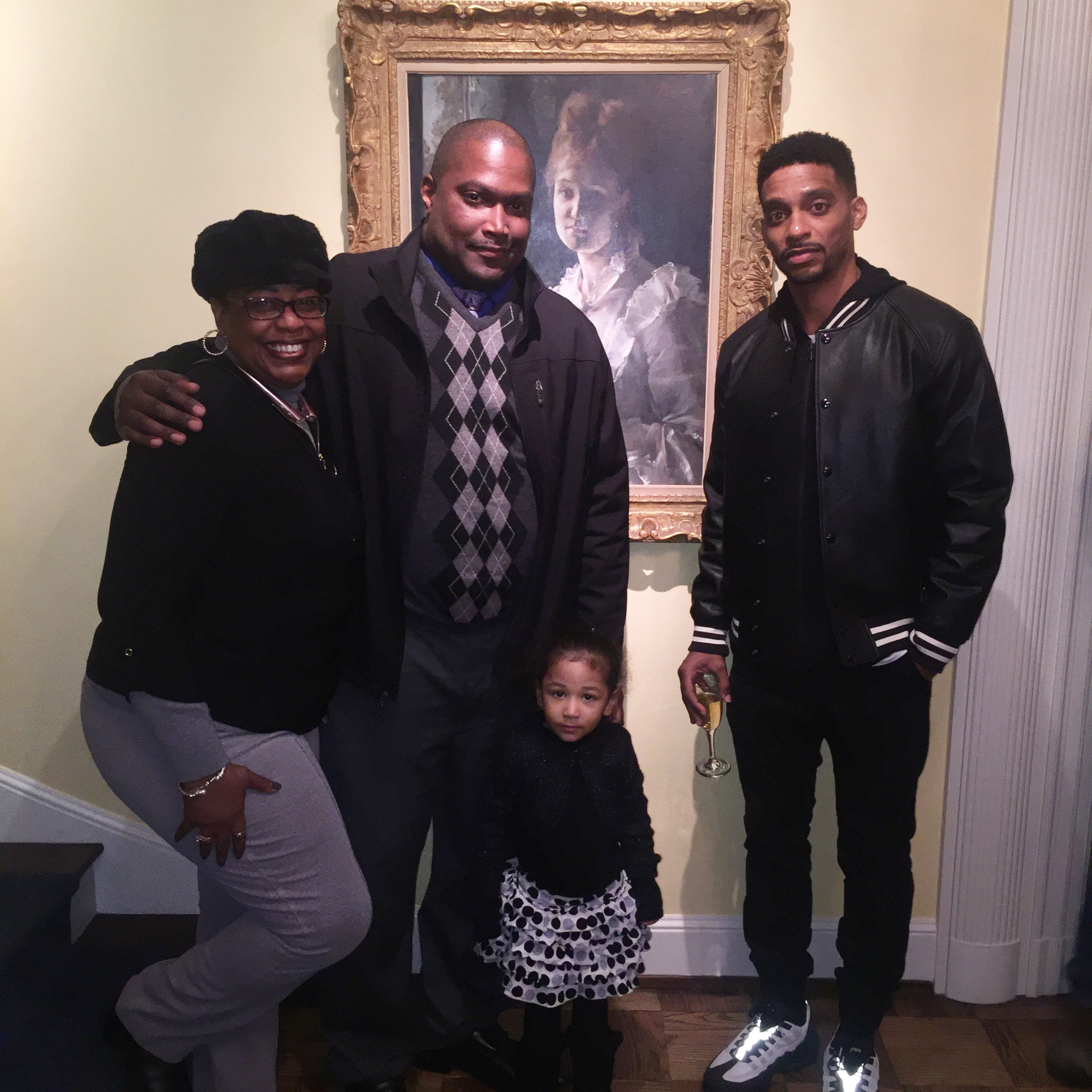 Michael Donahue
Michael Donahue
William Eggleston reception
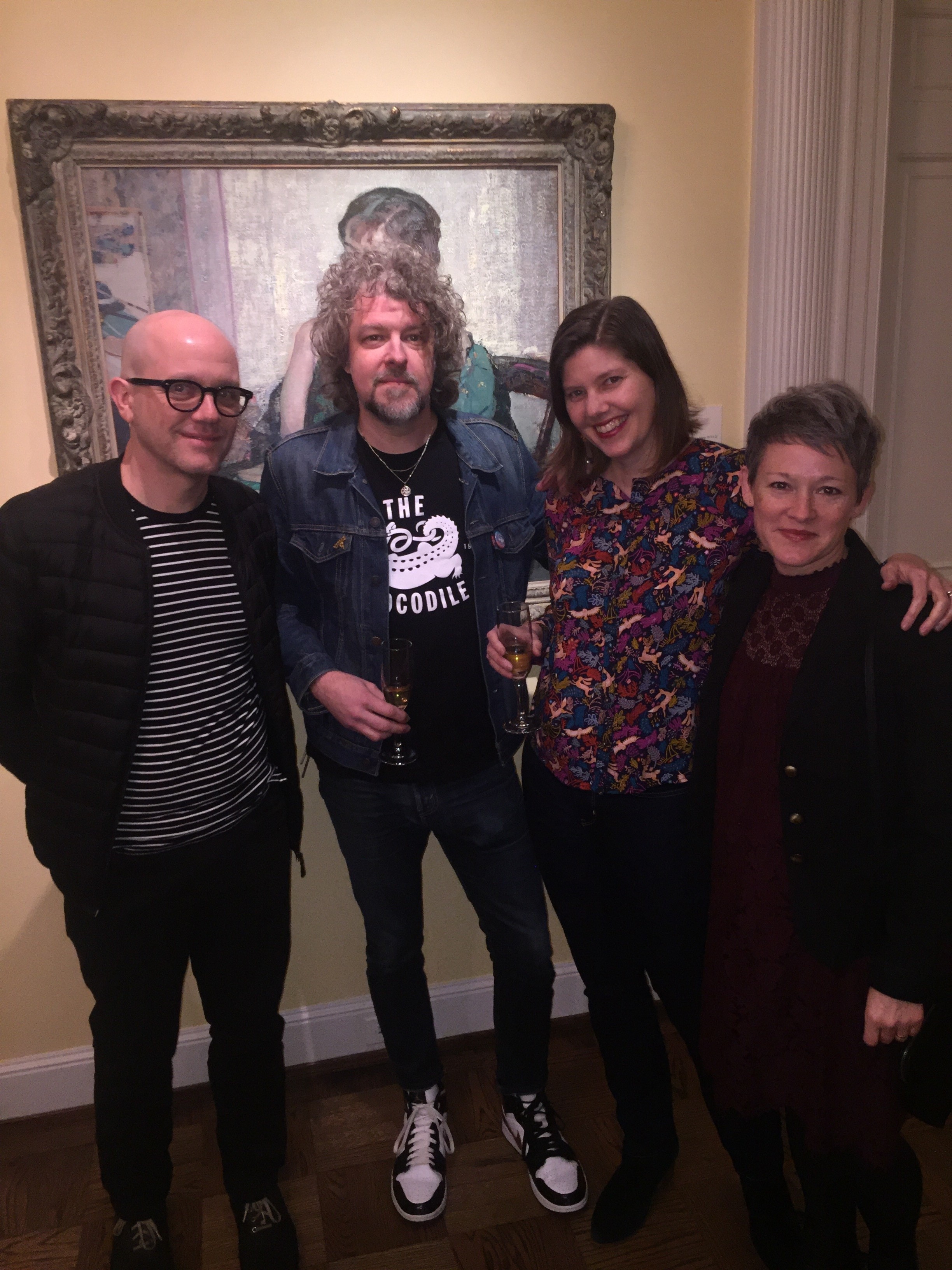 Michael Donahue
Michael Donahue
William Eggleston reception
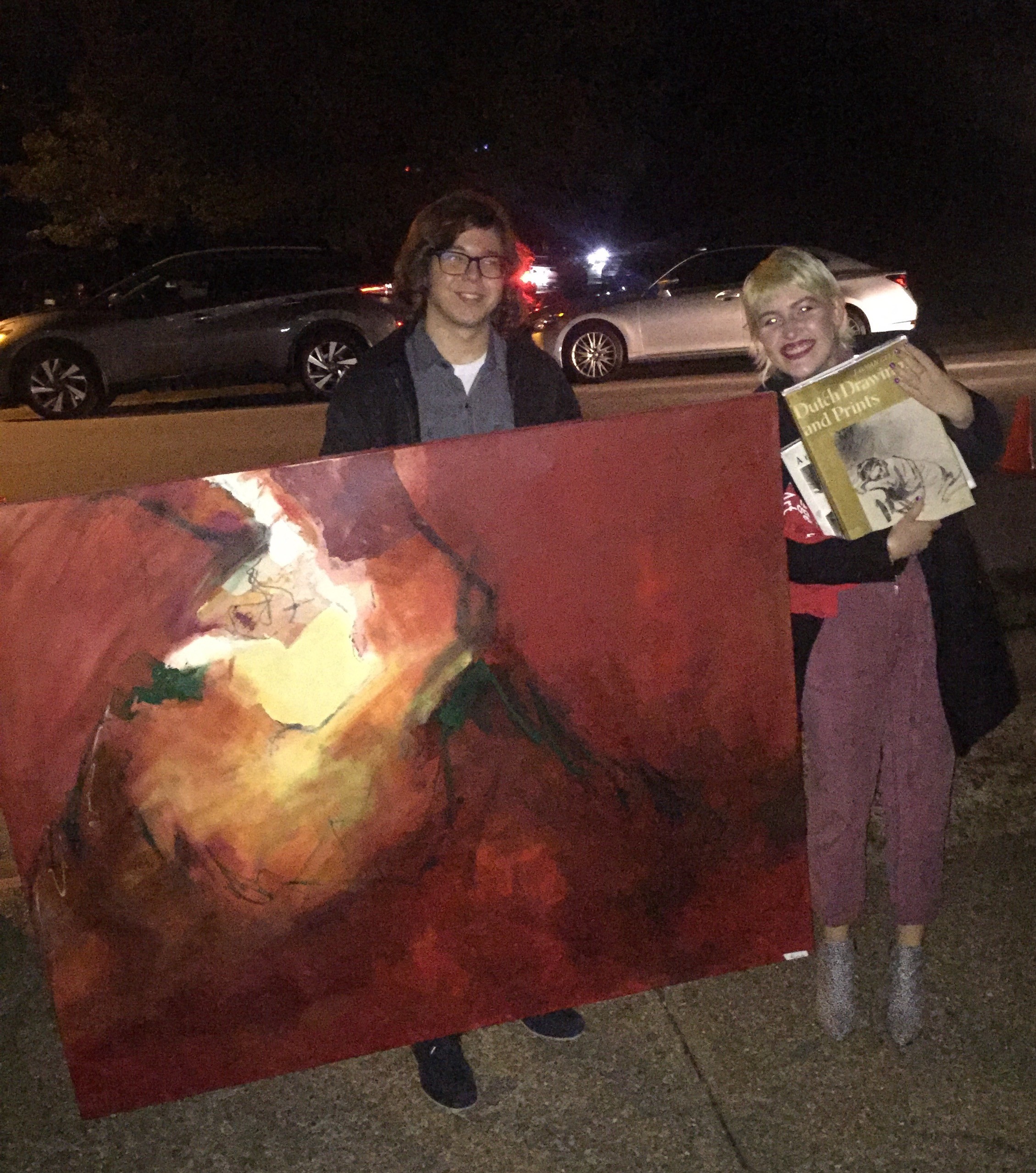 MIchael Donahue
MIchael Donahue
Zane Myer-Thornton and Bren Pepke at Finders Keepers
Bren Pepke and Zane Myer-Thornton carried a massive 48-inch-by-60-inch abstract painting out of Memphis College of Art during the school’s Finders Keepers event. The sale and auction consisted of the school’s entire collection of artwork.
She was carrying the painting for her father, Mark Pepke, who bought the Mary Reed painting on the first night of the sale, which ran January 25th to the 29th.
“We were carrying it to the car ’cause it wouldn’t fit in their car,” Bren says. “And it ended up not fitting in our car, either. We had to get another car. But we got it home.”
The Pepke family — Mark and his wife, Amy, and Bren’s sister Karis — showed up early. Mark spotted the painting, which he immediately recognized. “It was in my office for five years,” he says.
Mark, who was director of student life and housing, says, “I didn’t know it was there. I knew the collection was being sold. I wasn’t necessarily looking for that particular painting. But when I saw it on the wall I was like, ‘It’s going home with me.’”
The painting has sentimental value for him, but Mark says he also likes it. “I’m not much of a fan of abstract art, but I like the line quality in the painting with the color.”
He likes the “heavy dark line contrasted with the red and orange.” And, he says, “It has a definite focal point, so your eyes go right to it and wander around a few areas.”
It was a bit stressful after he saw the painting at the sale. “The students were putting up a ladder. I thought they were putting up a ladder to get it off the wall ’cause there was a lady with them.”
Mark put his hand on the painting as if to say, “Hey, it’s mine. Stand back.”
It turned out the woman was interested in something else.
The College of Art also meant a lot to his children, Mark says. The sale had “an element of a sad passing of time for us. The College of Art has been a big part of their lives since they were probably 3, 4, and 5 years old. They’ve grown up down in the hallways with me in my office. They’ve taken classes there. We’ve gone there almost every year for Holiday Bazaar.”
So, where is the painting going? “It’s too big for the house. It’s contrary a little bit to her (his wife’s) color scheme. So I’m putting it in my office now.”
Opening night resembled a Black Friday sale of very cool items. People crowded around tables filled with artwork.
Reed Malkin, one of the guests on the jam-packed opening night, says, “The art was getting in the front door.”
Memphis College of Art president Laura Hine estimates 1,000 to 1,500 people attended opening night. “It’s very hard to say how many people were here on Saturday night,” she says. “Before we opened the doors, the line was down the front stairs wrapped around the south side of our lawn all the way to the Brooks Museum.”
And, Hine says, “A 30-year faculty member said he’s never seen the gallery as crowded.”
As for how much money was raised, Hine says, “We are not disclosing the amount of money raised during the sale. The sale proceeds are being added to MCA’s operating budget while we teach our remaining students who will graduate in May.
“It was a very emotional experience for the MCA community, especially in the preparation phase when we had to catalog decades of artists’ work. The only thing that made it palatable was that the artwork would find homes and that people will preserve and appreciate it for decades to come.”
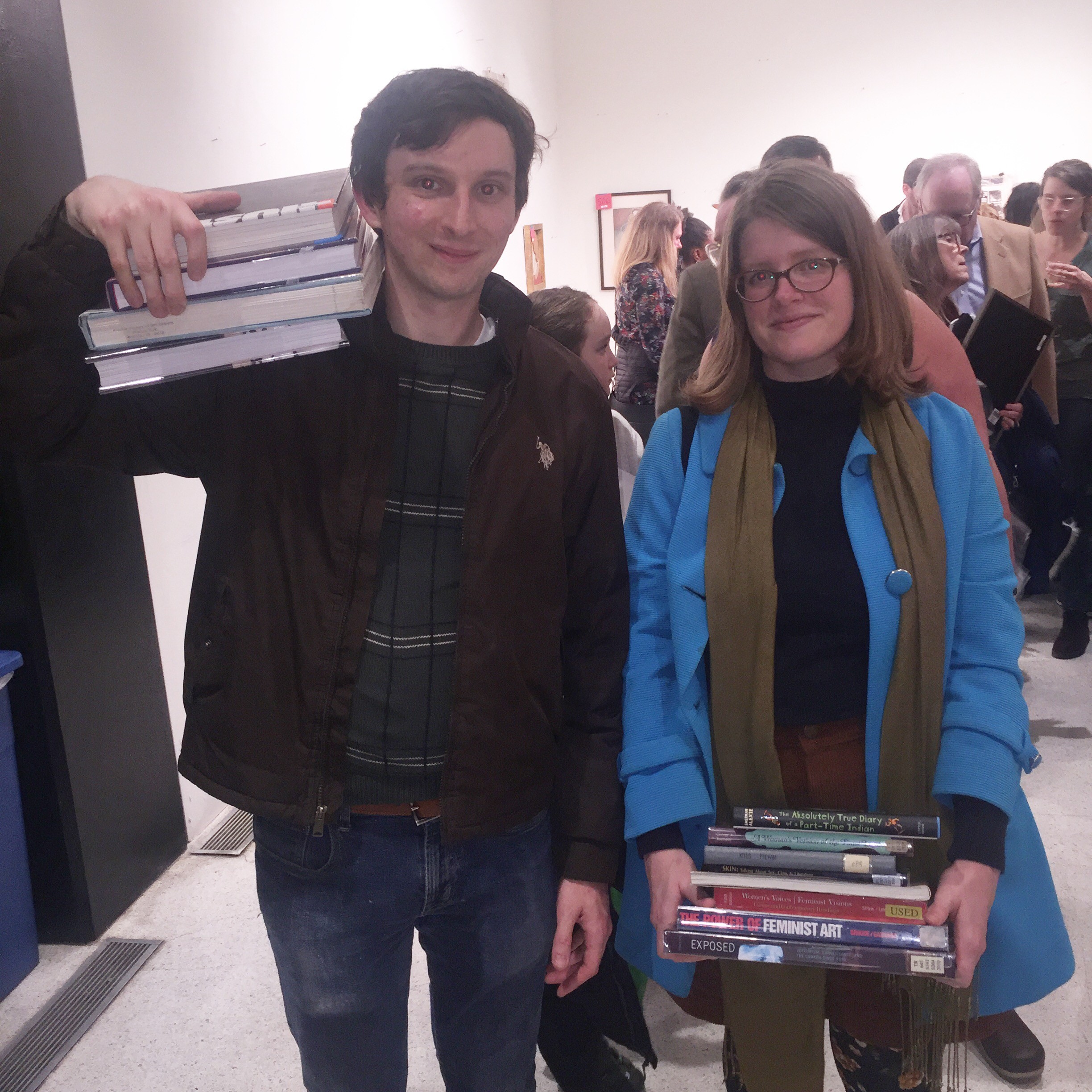 Michael Donahue
Michael Donahue
Finders Keepers
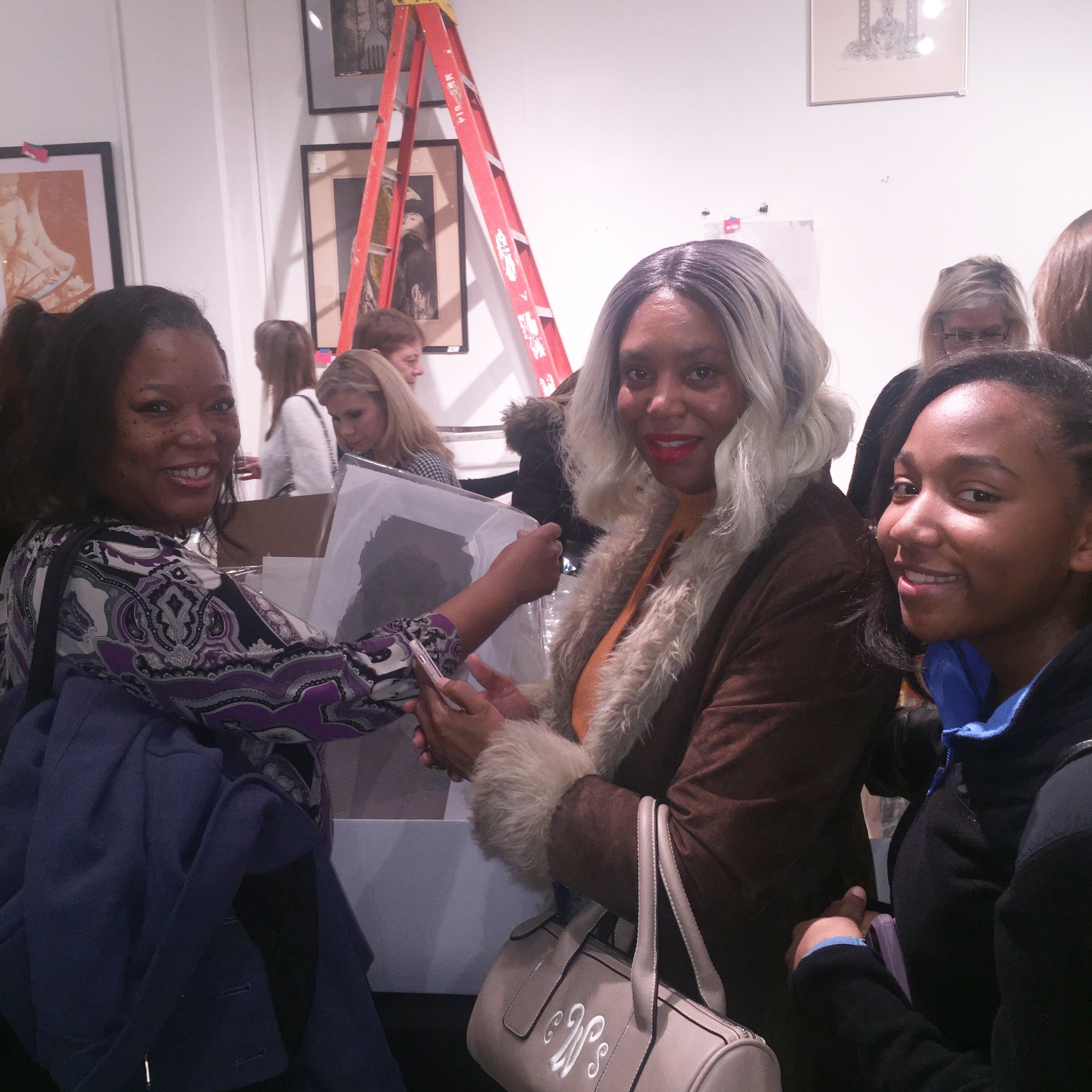 Michael Donahue
Michael Donahue
Finders Keepers
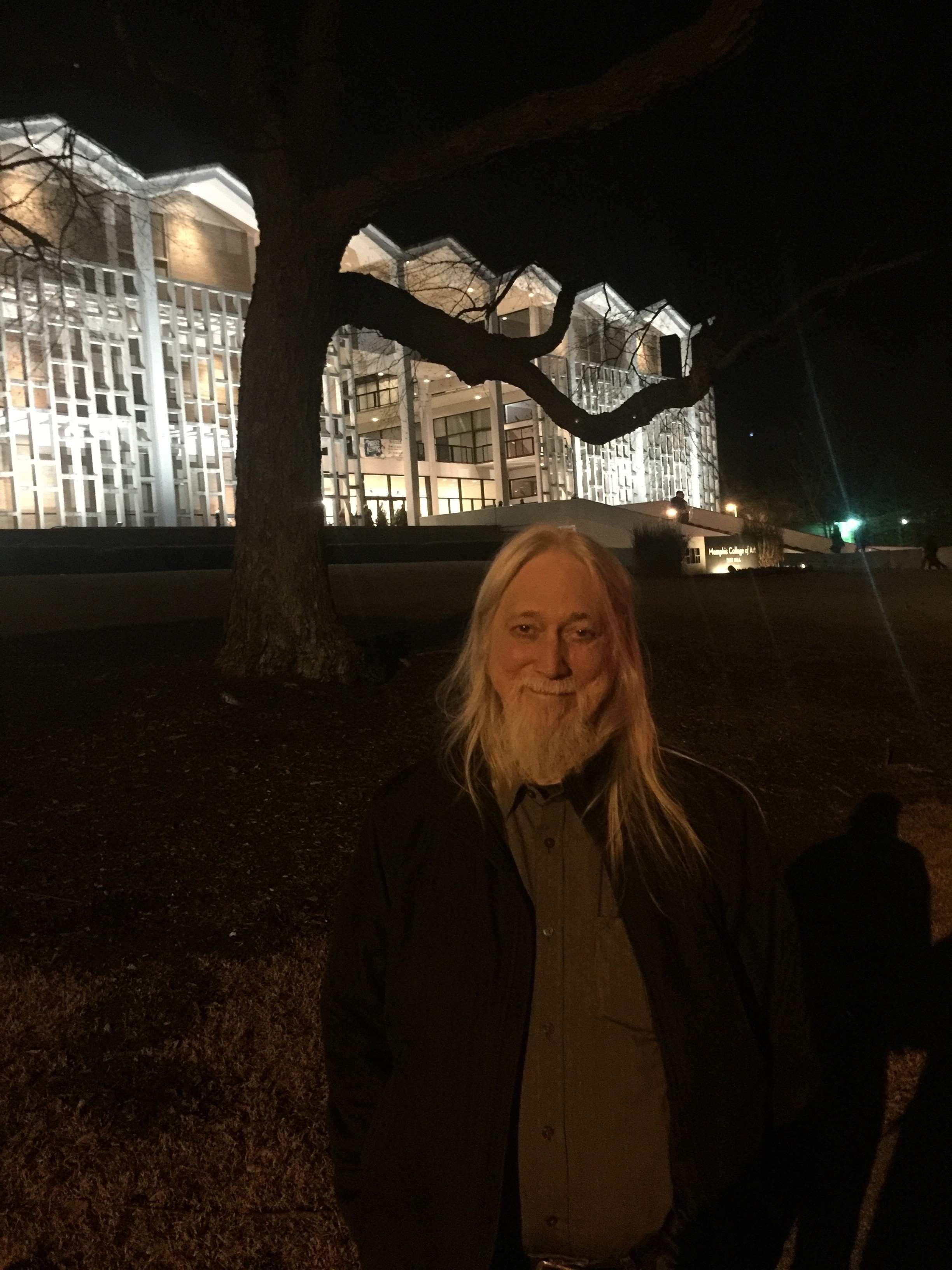 Michael Donahue
Michael Donahue
Jimmy Crosthwait at Finders Keepers
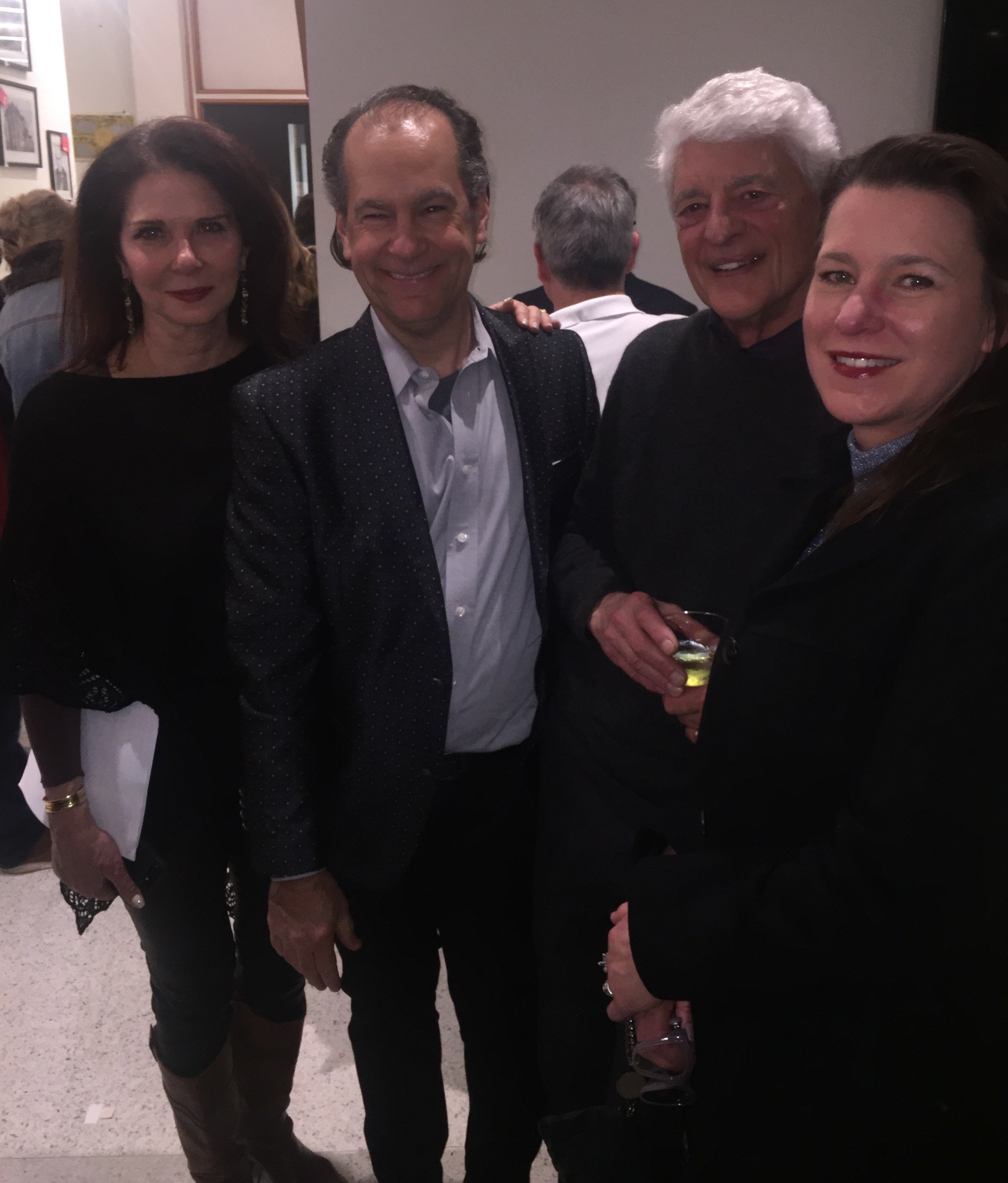 Michael Donahue
Michael Donahue
Laura Hine, David Lusk, Henry Doggrell, and Carissa Hussong at Finders Keepers
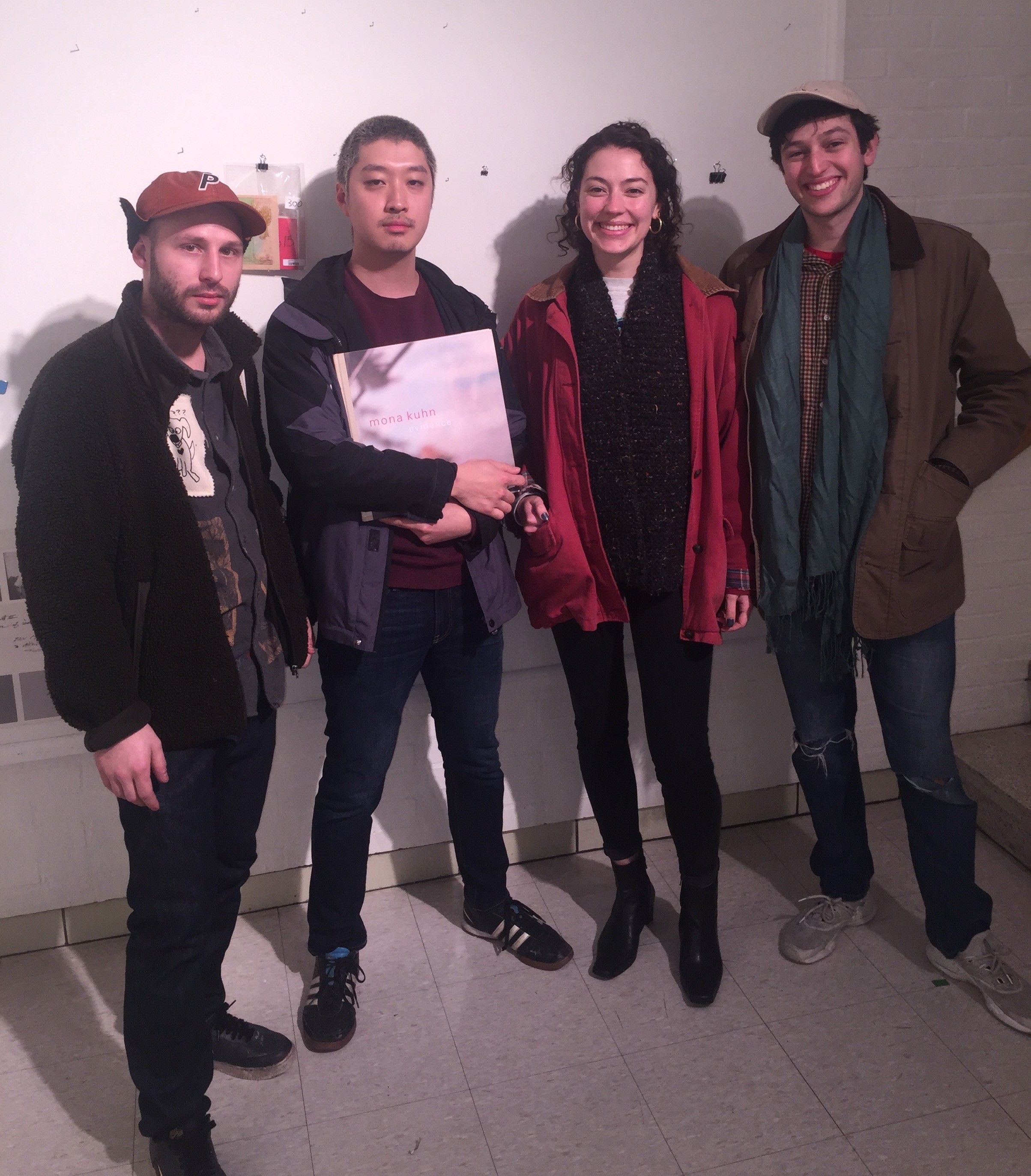 Michael Donahue
Michael Donahue
Finders Keepers
 Michael Donahue
Michael Donahue
Mystic Krewe of Pegasus Mardi Gras Ball XVII
Joseph Osment Is king Pegasus XVII, and Jane Pratt Park is queen Pegasus XVII of the Mystic Krewe of Pegasus.
They were announced at the Mardi Gras Ball XVII “A Night Under the Big Top,” which was held January 25th at Minglewood Hall.
Mystic Krewe of Pegasus is “a Mardi Gras krewe here in Memphis,” says Ball Captain Jesse James. “We are a gay Mardi Gras krewe, but we are way more than a gay Mardi Gras krewe.”
And, he says, “We run the whole gamut. We have straight people. We try to have the most diversity possible.”
About 500 people attended the event, which was a fundraiser for the Shelby County Drug Foundation, says Ball Captain Jesse James.
James didn’t have the total amount of money raised at the ball, but, Jesse says, “We will do a check presentation in April because we still collect money for them through the end of March.”
And, he says, “Up to this year, not knowing what we raised [at the ball], we’ve raised over $300,000 for charities over the past 17 years.”
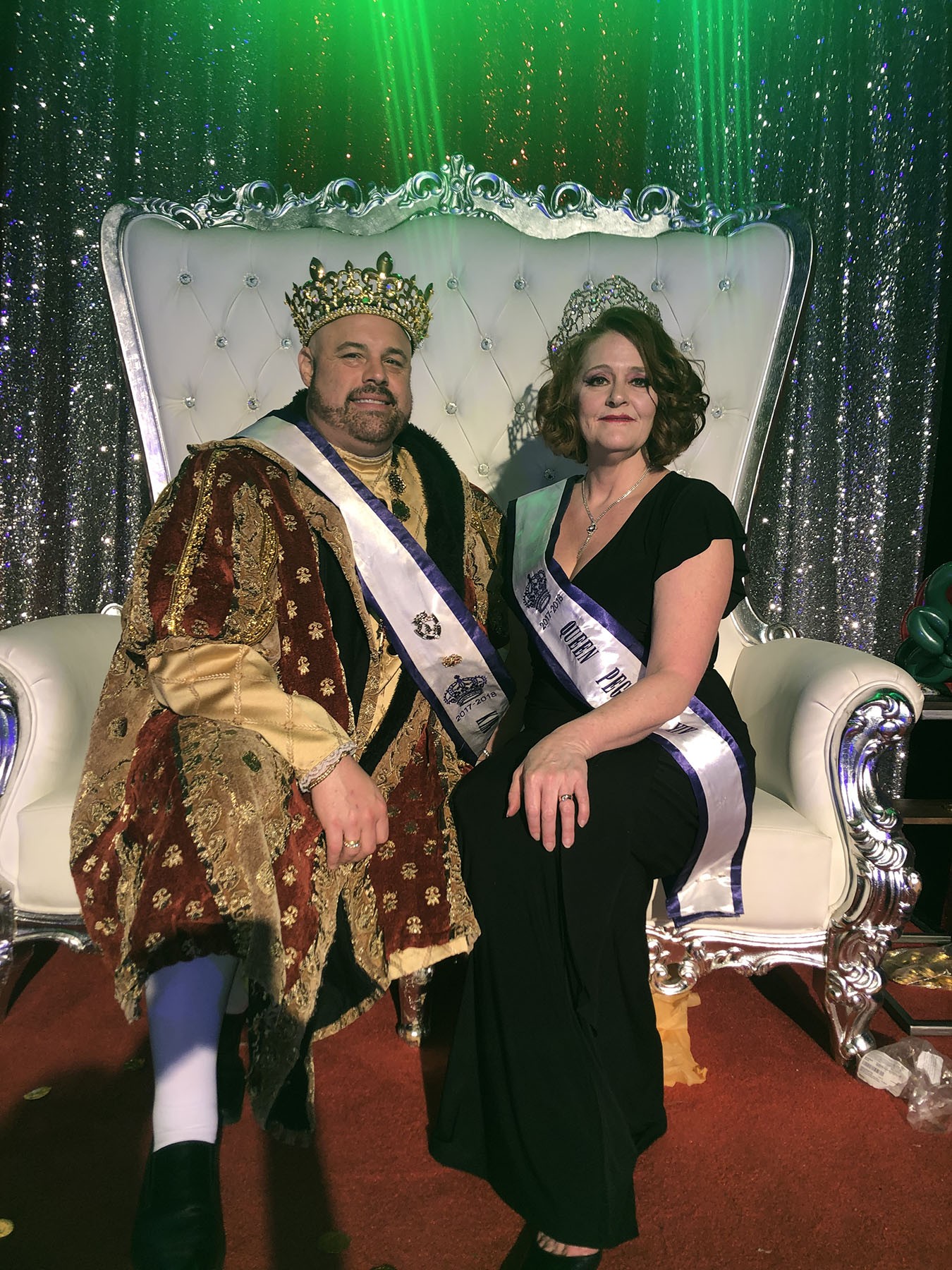
Joseph Osment and Jane Pratt Park at the Mystic Krewe of Pegasus Mardi Gras Ball XVII
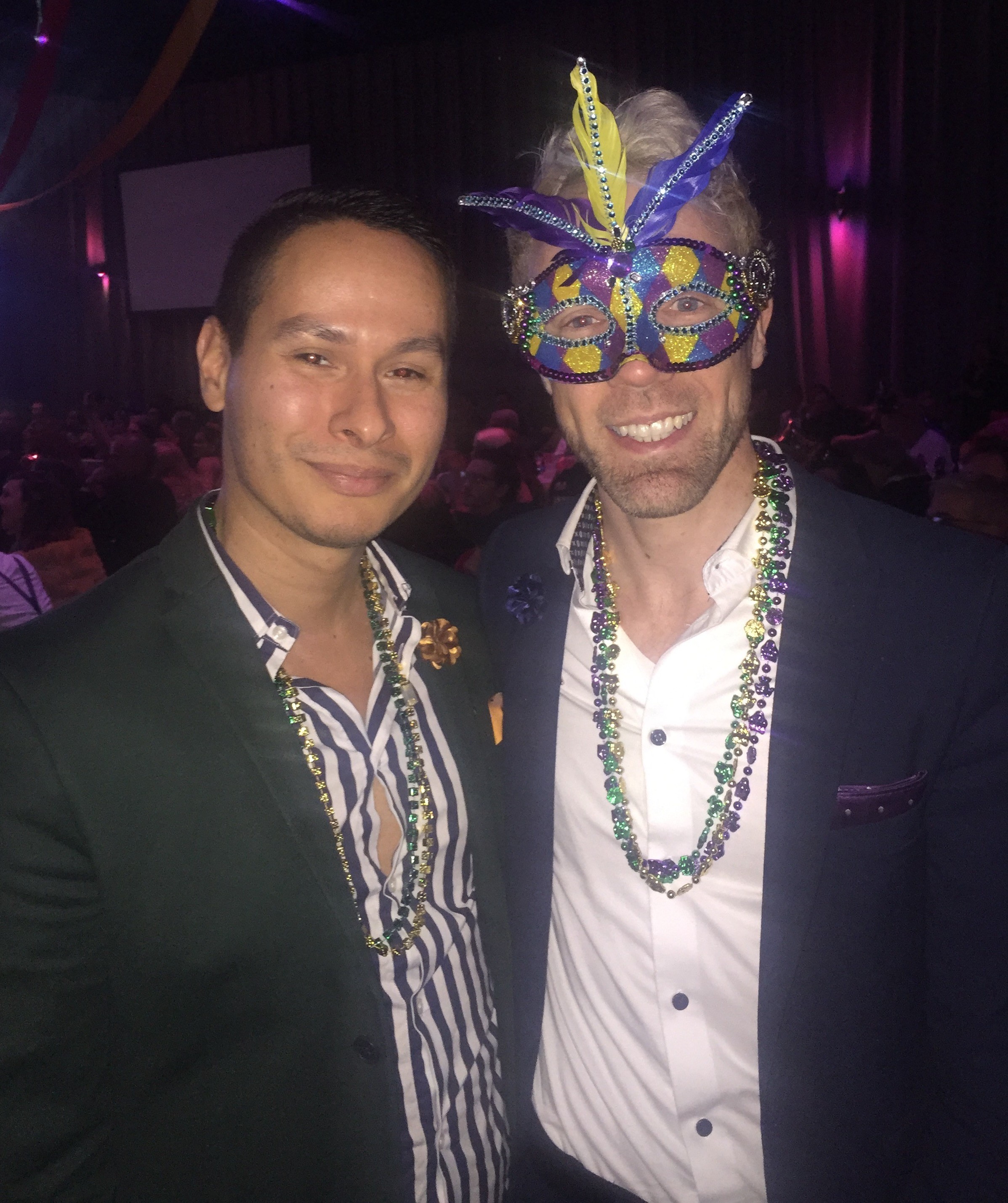 Michael Donahue
Michael Donahue
Mystic Krewe of Pegasus Mardi Gras Ball XVII
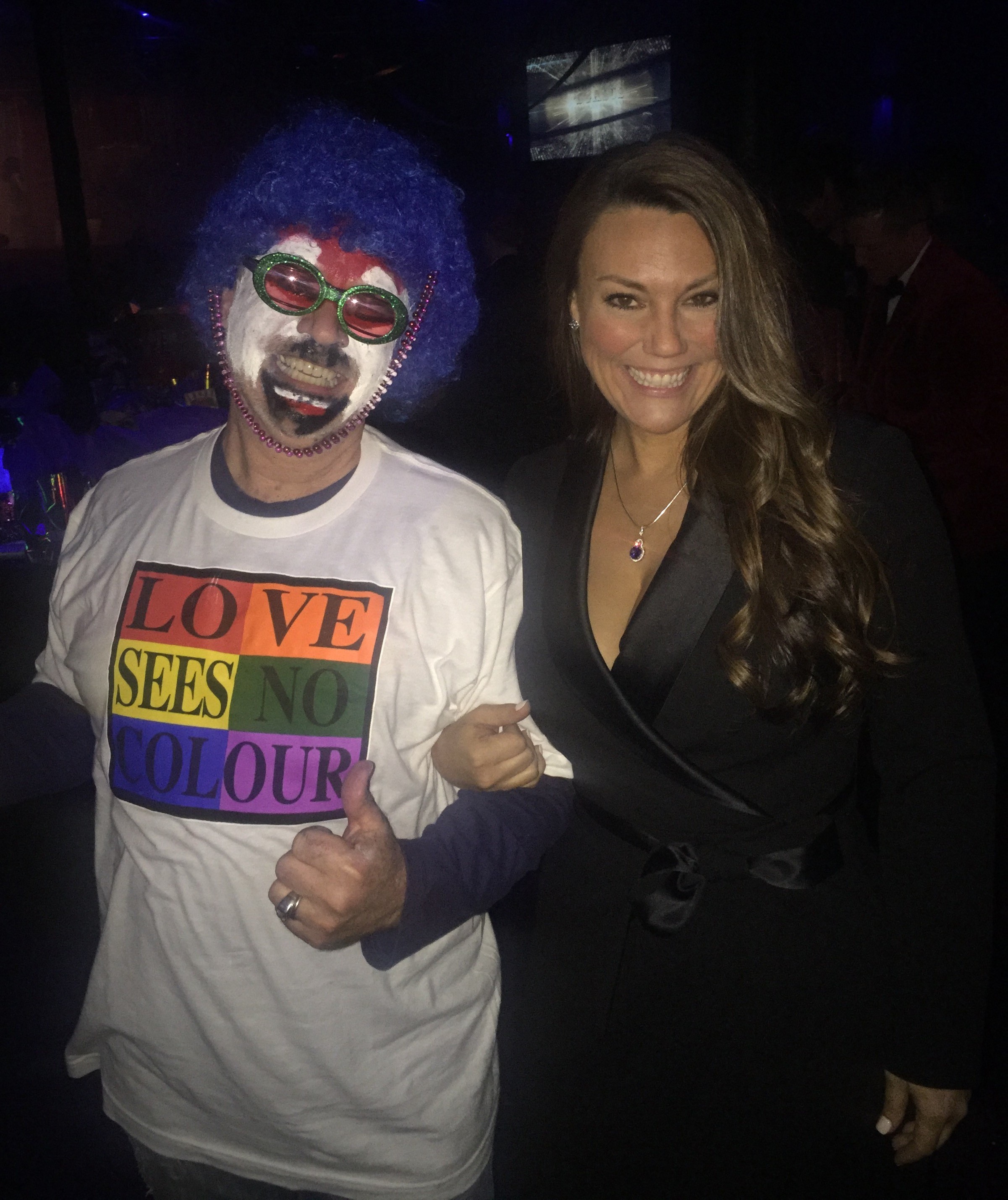 Michael Donahue
Michael Donahue
Mystic Krewe of Pegasus Mardi Gras Ball XVII
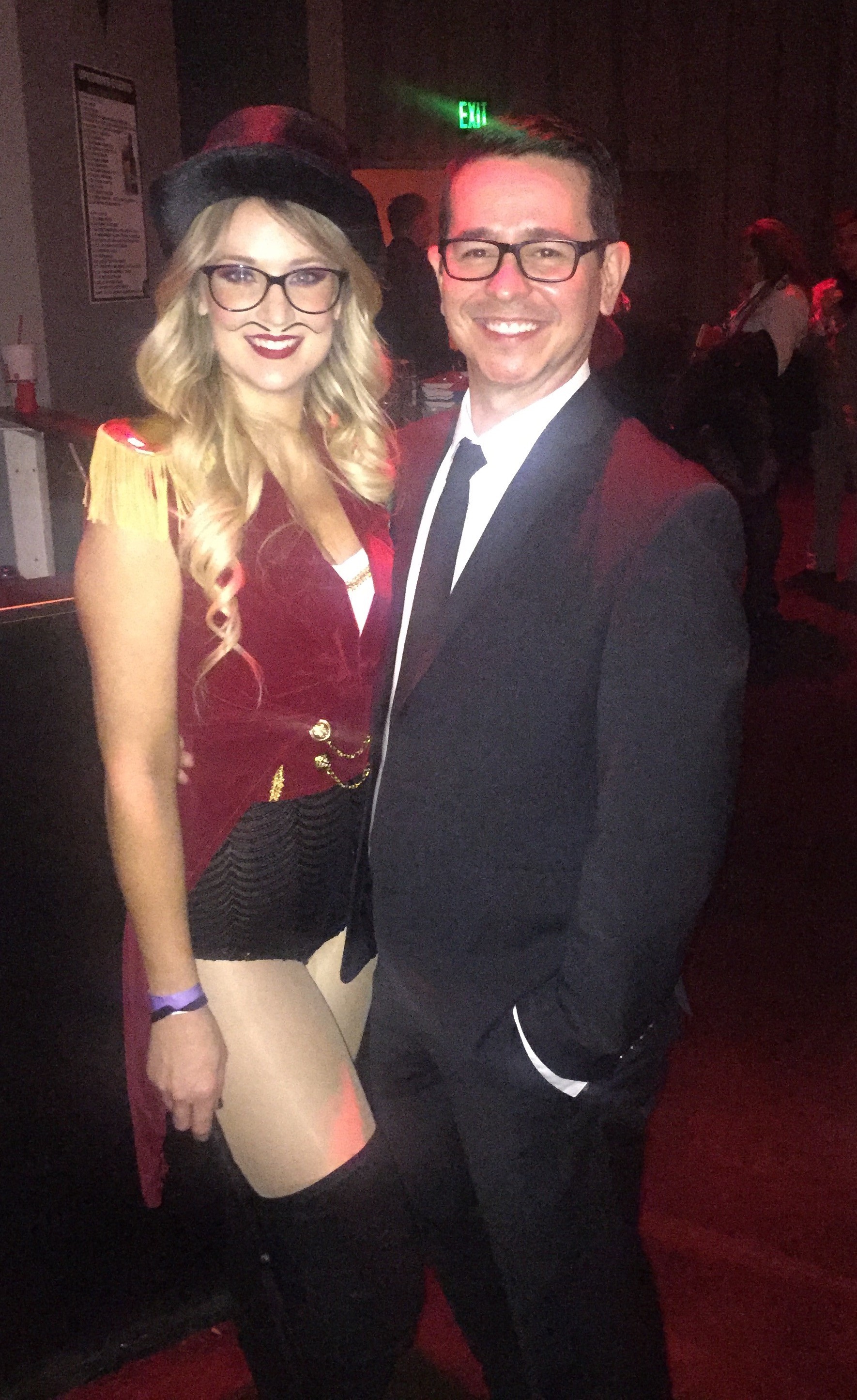 Michael Donahue
Michael Donahue
Laura and Nick Scott at the Mystic Krewe of Pegasus Mardi Gras Ball XVII
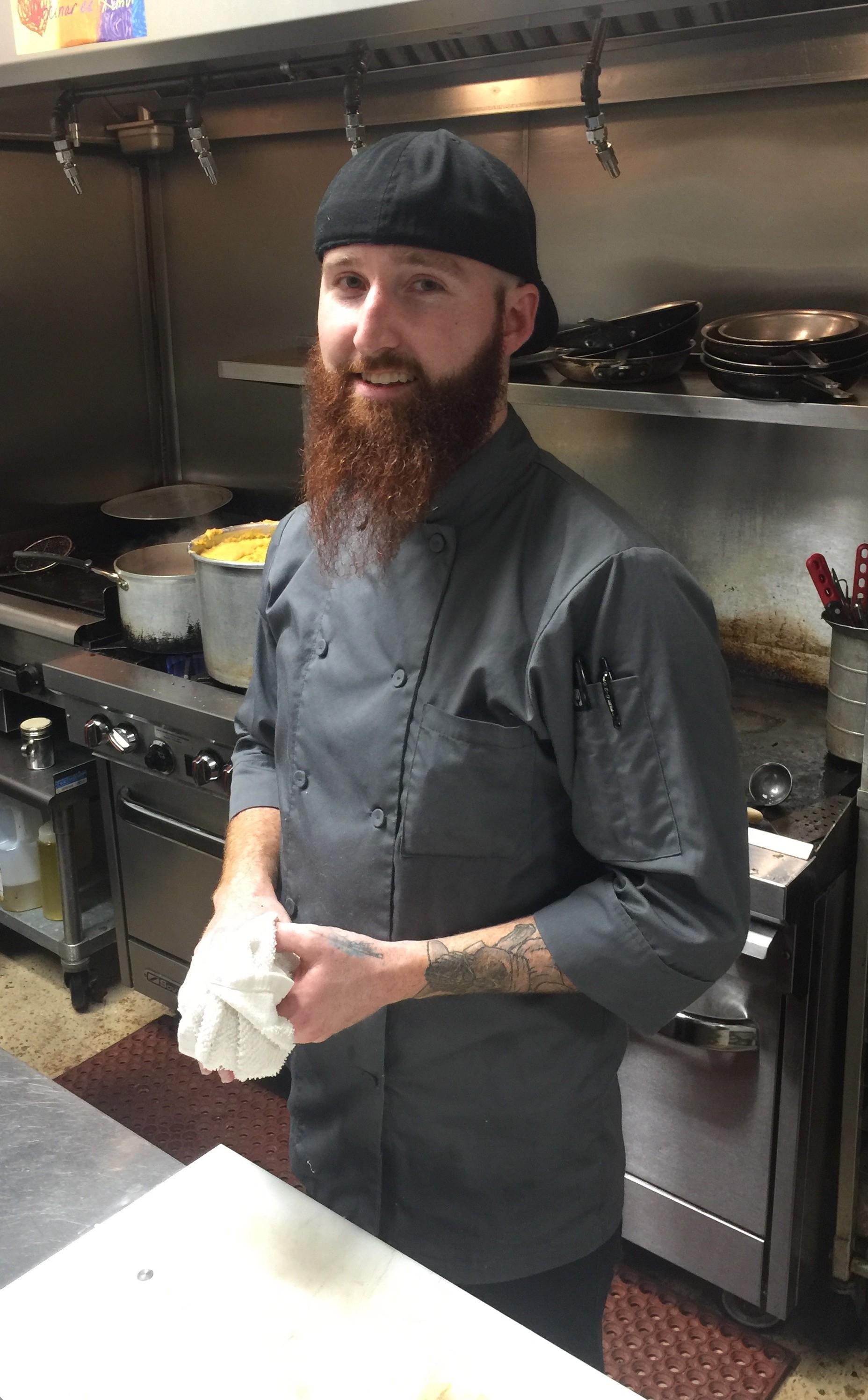 MIchael Donahue
MIchael Donahue
Conrad Phillips at Season’s End Wild Game Dinner & Fundraiser
Conrad Phillips hosted his first dinner at Caritas Community Center & Cafe, where he is chef de cuisine.
His Seasonal Wild Game Dinner, which was held January 25th at the center, featured hors d’oeuvres and four courses paired with wine. Guests began with bacon-wrapped quail breast with a porcini glaze and alligator poppers with chipotle ranch and continued with elk bolognese, duck confit/duck fat Yukon mashed potatoes, and herb-crusted rack of wild boar with smoked gouda grits and roasted asparagus.
Dessert was chocolate Grand Marnier duck crème brûlée. Linda Smith, one of the guests, says, “It was one of the best I’ve ever had.”
During his remarks, Phillips told the diners, “I like to give people something they’re not familiar with. And do it in a way they can accept it — not have to be afraid to try it.”
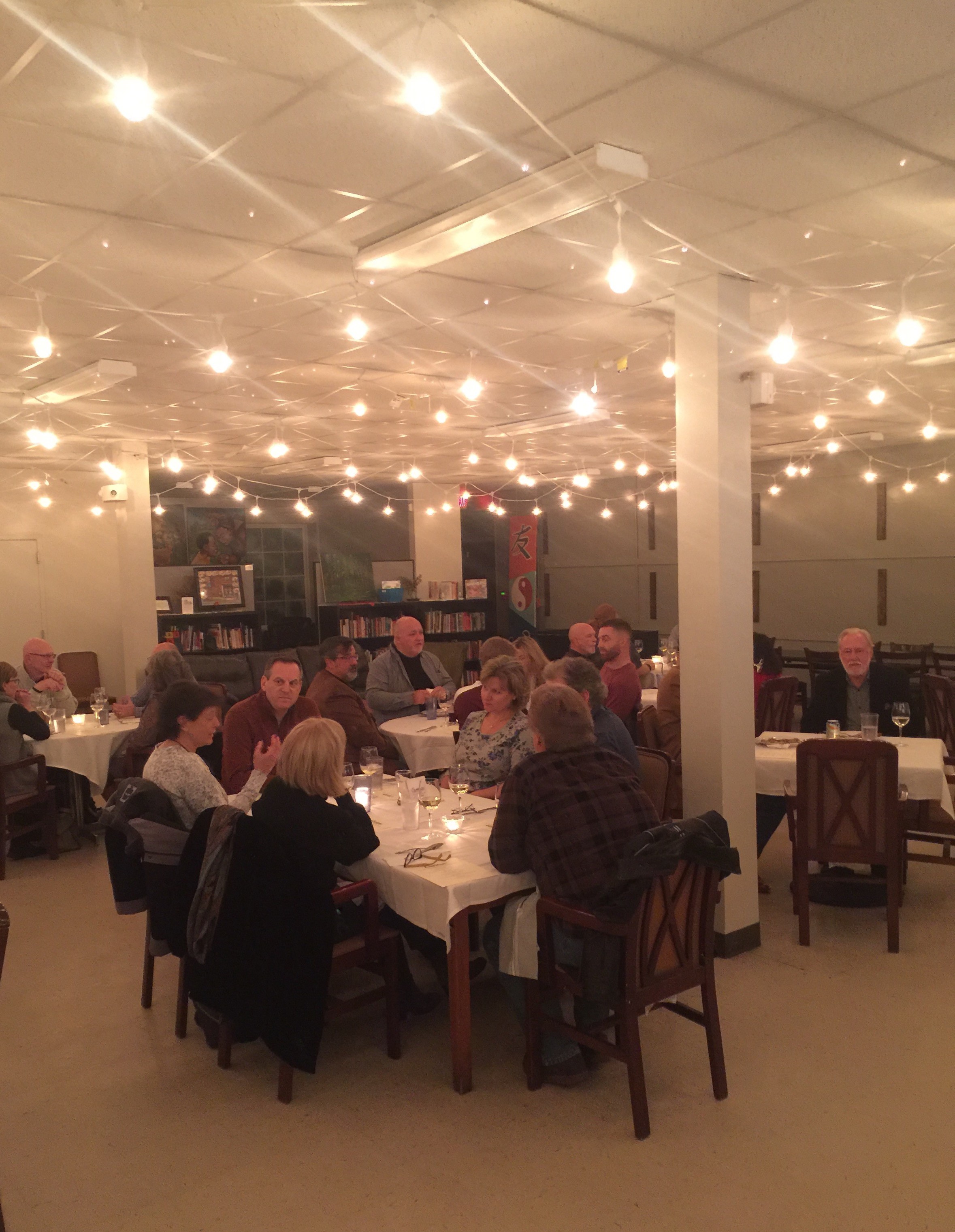 Michael Donahue
Michael Donahue
Season’s End Wild Game Dinner & Fundraiser
WE SAW YOU AROUND TOWN
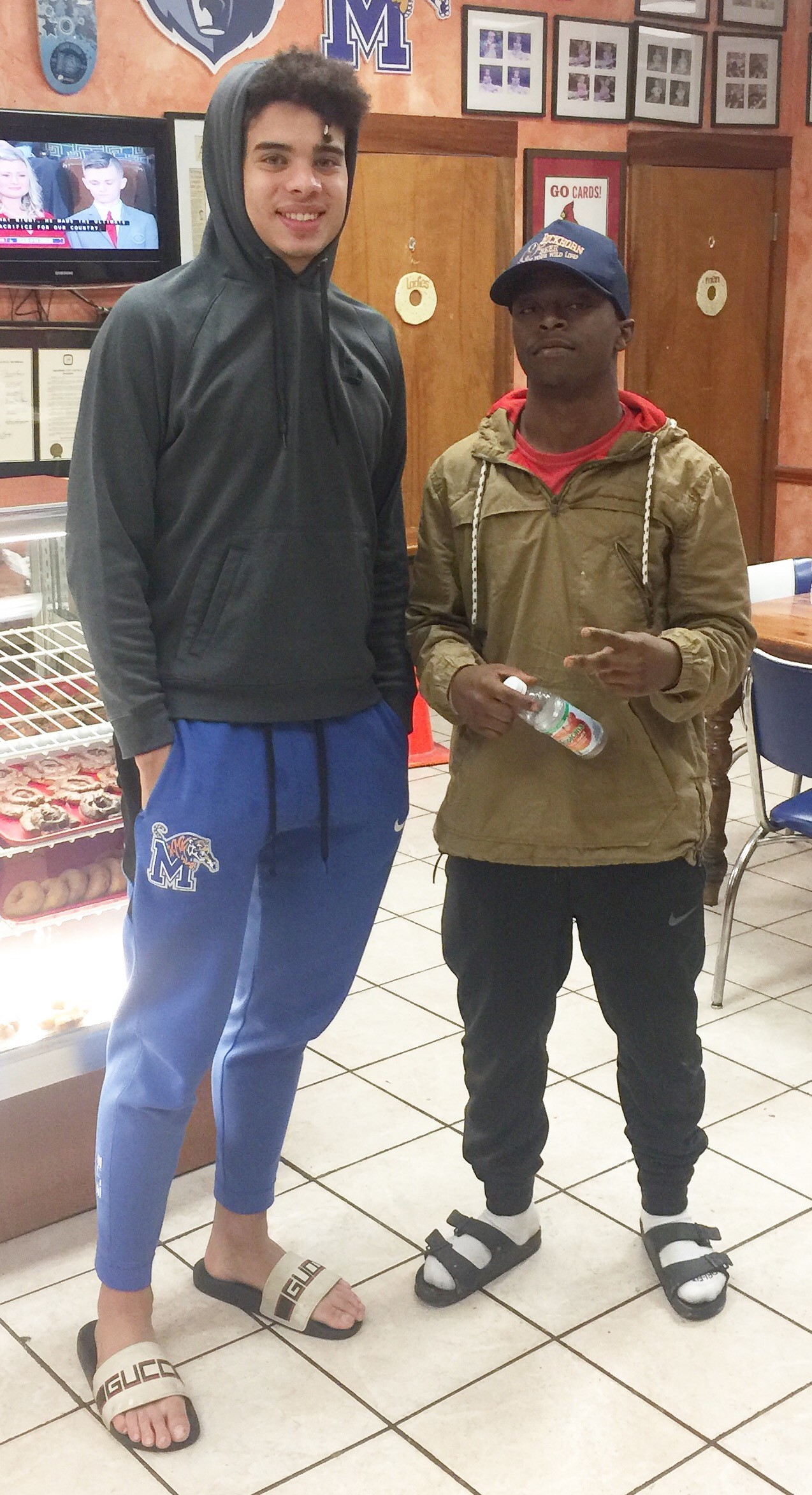 Michael Donahue
Michael Donahue
Lester Quinones Jr. of the University of Memphis Tigers and Scout at Gibson’s Donuts
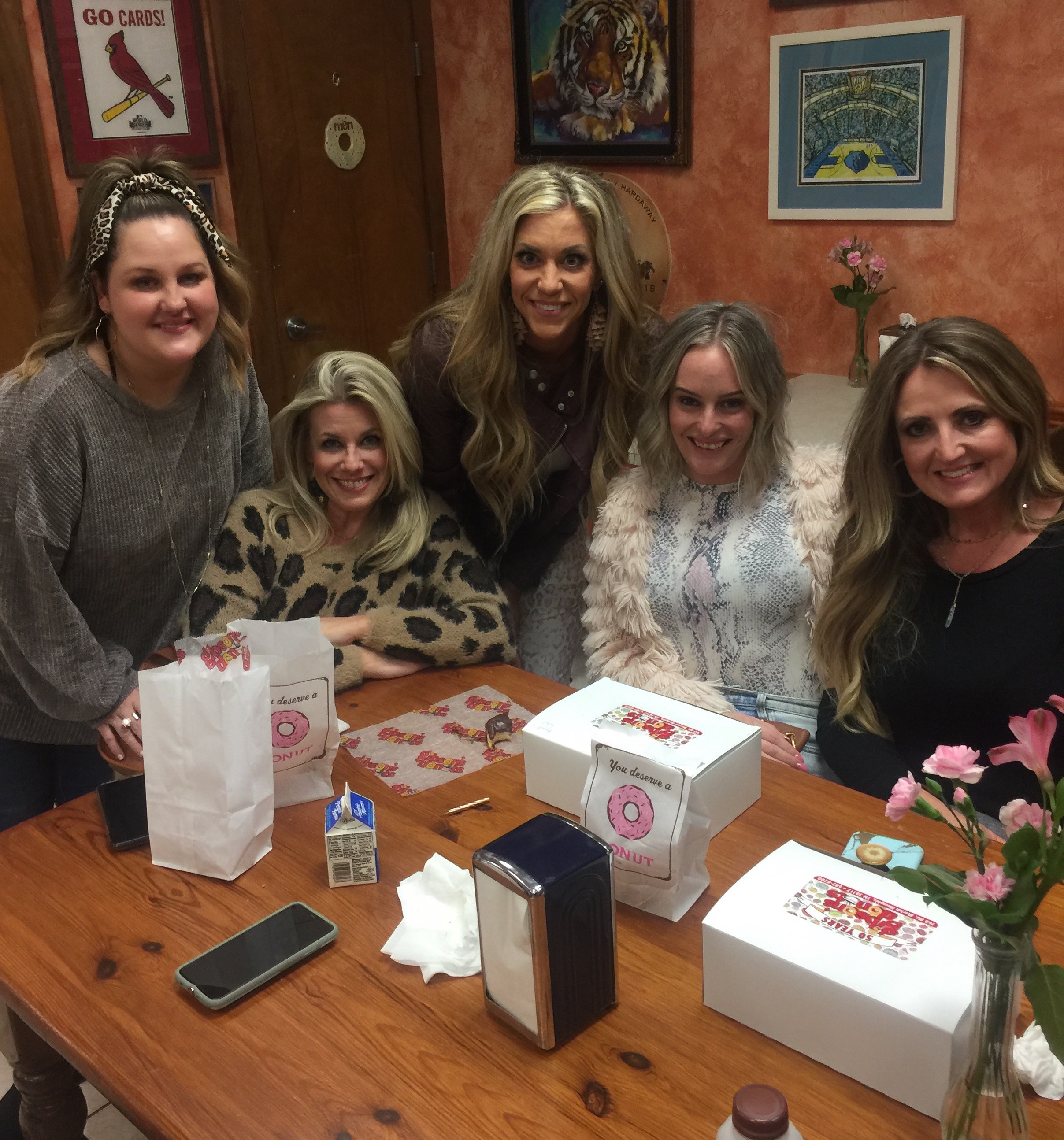 MIchael Donahue
MIchael Donahue
Holly Long, Lindsey Gammel, Shawn Whitworth, Lauren Poteet, and Laura Davidson at Gibson’s Donuts. They work or have worked at Ella David Salon.
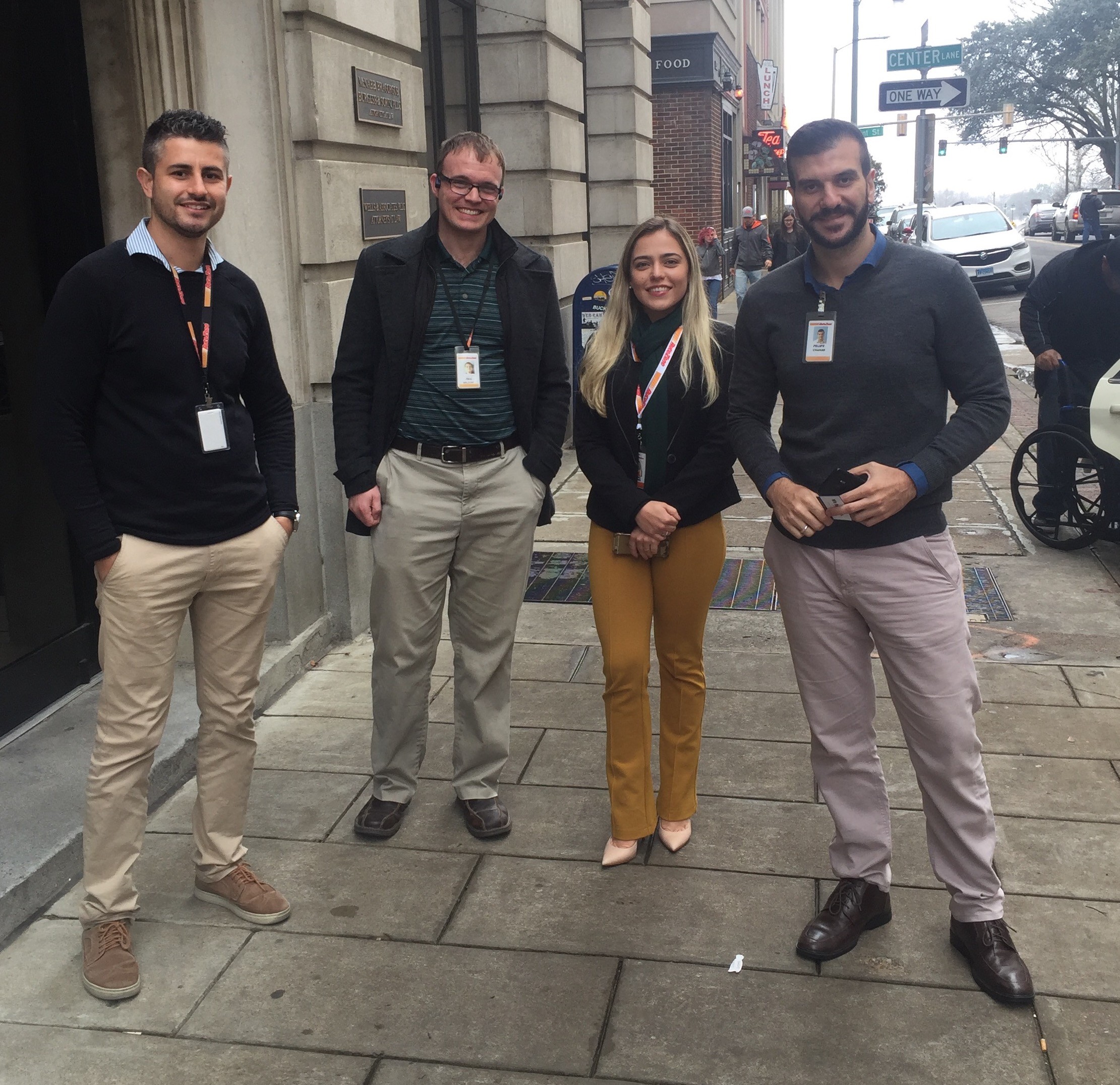 Michael Donahue
Michael Donahue
Autozoners from Brazil and Memphis at lunch Downtown
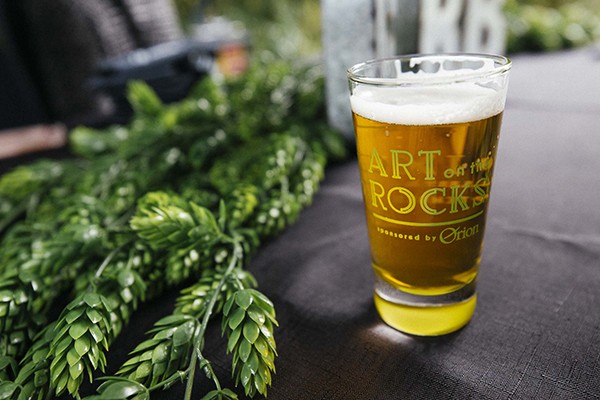 Dixon Gallery and Gardens
Dixon Gallery and Gardens 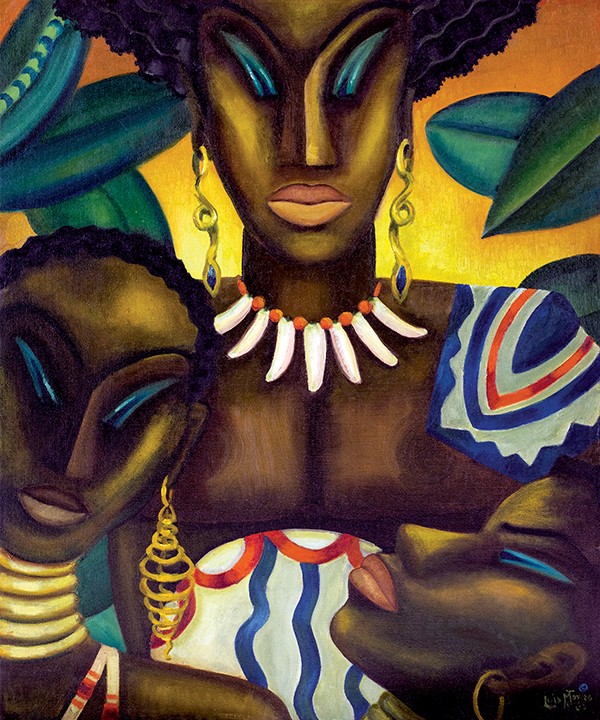
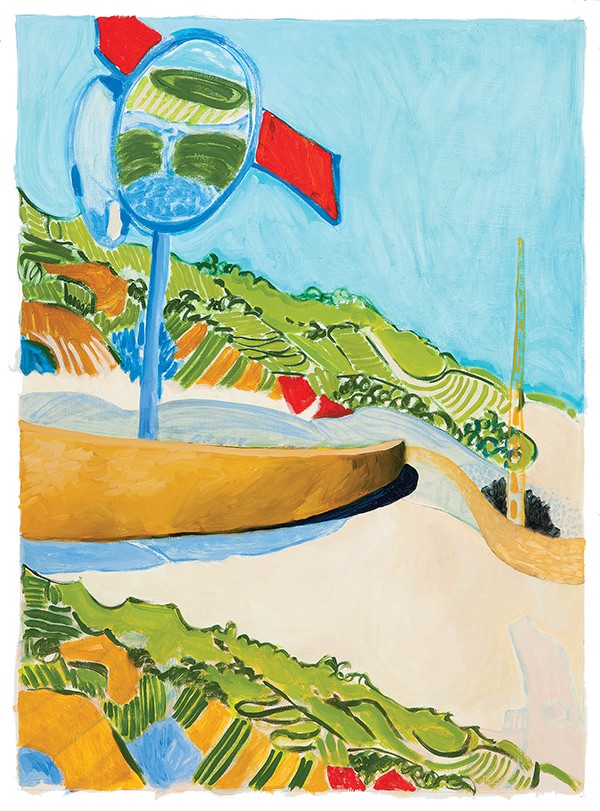
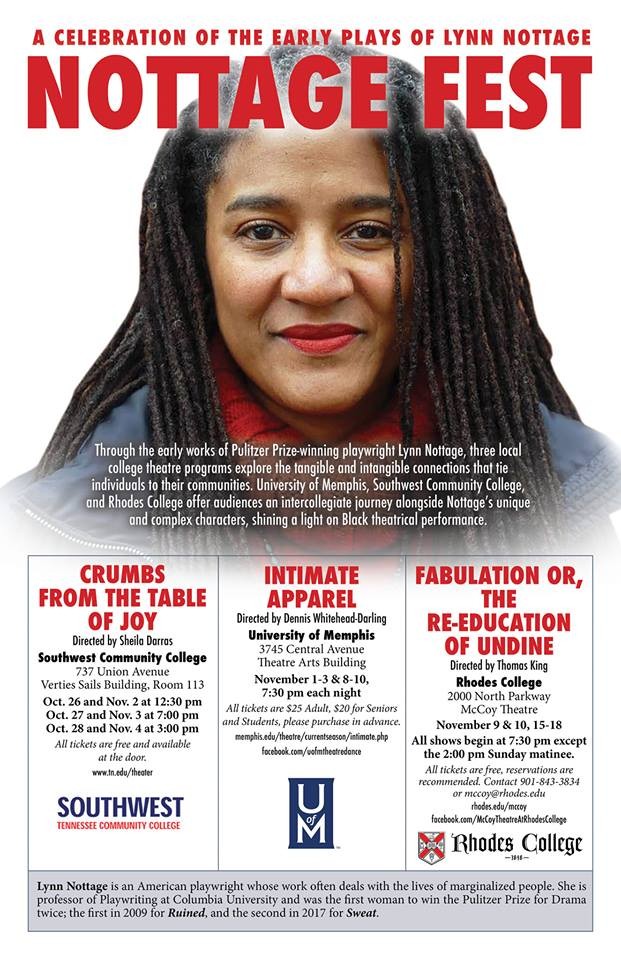
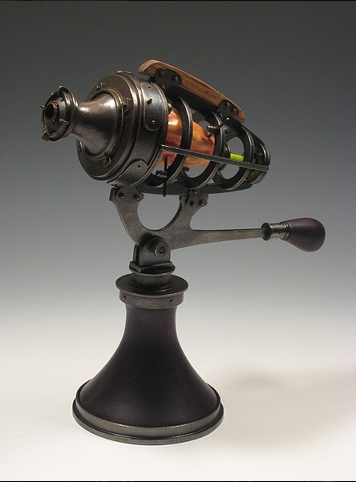 David Clemons, ‘Senescopia’ (2007)
David Clemons, ‘Senescopia’ (2007) 